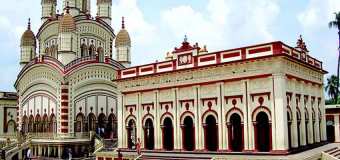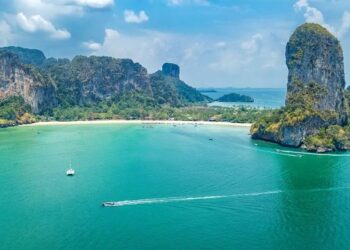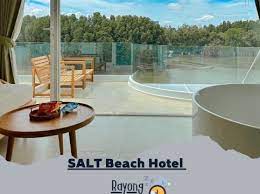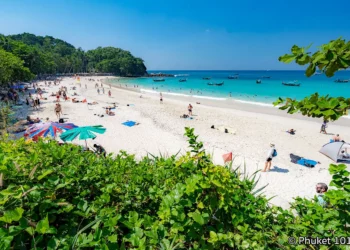The Rampara Kalibari, in Rampara village, Jangipara, Hooghly, West Bengal, is a divine shrine dedicated to Goddess Siddheshwari Kali, a form of Kali linked to Lord Shiva as Siddheshwar. About 35 kilometers from Kolkata, it is a key spot for people who pray, especially during its big Kali Puja. This blog gives detailed information about the temple’s past, its architecture, why it matters for worship, and how to visit, based on what is known.
History of Rampara Kalibari
The Rampara Kalibari started over 300 years ago, built by the Nandy family, who loved and worshipped Goddess Kali. They made the temple to bring good fortune and protection to Rampara and nearby villages. Some say the wooden idol of Siddheshwari Kali, the main deity, is over 500 years old. Long ago, people thought the idol looked so fierce they were scared to visit in the daytime. About 100 years back, the idol was changed to look less frightening, and it stays that way now. The temple was rebuilt in the early 1900s, with workers who also helped build Kolkata’s Victoria Memorial.
The Nandy family has kept the temple going, with their children and grandchildren doing daily prayers and taking care of it. The temple is known for its strong tie to Kali worship, making it a respected place in Hooghly. Every year, during Diwali in October or November, the Kali Puja brings many people from far villages and towns, showing its big role in faith and local life.
Architecture of Rampara Kalibari
The Rampara Kalibari is built in the Bengali aat chala style, with a roof that slopes eight ways, common in this area. The temple area has a big open yard, a small garden, a hall for special events, and walls around it. The main room holds the wooden idol of Siddheshwari Kali, placed next to the deity Panchanan in the same space, which is not common. Another room has idols of Lord Jagannath, Subhadra, and Balaram, showing the temple honors different gods. There is a rath, or chariot, used for the Jagannath Puja’s Rath Yatra, held in the yard. A pond nearby is used for prayers, and the Nandy family lives close, with a room for storing puja items like pots and spices. The temple’s design is simple but old, and the yard and garden make it feel serene. Some people say it needs better care, as parts look worn, but it still feels holy.
Rituals and Worship
The Rampara Kalibari is a main place for Kali worship in Hooghly, especially during the Kali Puja at Diwali. Siddheshwari Kali, seen as a form of Shiva’s power, is believed to give safety, strength, and peace to those who pray. The 500-year-old wooden idol is very much alive making the temple special. The Kali Puja is a lively time, with big rituals and a fair that brings thousands, showing the area’s love for the goddess. The Nandy family’s daily prayers keep the temple’s holy routine alive. Festivals like Jagannath Puja add to its mix of worship. The quiet village setting, away from city sounds, makes it a good spot for praying and thinking, drawing both local people and those from Kolkata.
Things to Do at Rampara Kalibari
Visitors can do things that mix faith, history, and village life:
Pray at the Temple: Join daily prayers or the big Kali Puja during Diwali to see the temple’s ways.
Look Around the Temple: See the aat chala main room, Jagannath idols, and the yard for Rath Yatra.
Visit Nearby Places: Go to Rajbalhat, 10–15 kilometers away, for old terracotta temples like Radha Govinda (1733) and Sridhar Damodar (1724).
See the Kali Puja Fair: If there during Diwali, visit the fair to feel the local faith and fun.
Walk in Rampara: Look at the village’s fields, ponds, and small shops, or eat local food at stalls.
Visiting Information for Rampara Kalibari
How to Get There
The temple is in Rampara, Jangipara, Hooghly, 35 kilometers from Kolkata, with different ways to travel.
By Plane: The closest airport is Netaji Subhas Chandra Bose International Airport in Kolkata, 35–40 kilometers away. Taxis or buses from Kolkata to Jangipara take 1.5–2 hours, then a short ride to Rampara.
By Train: Haripal Railway Station, 10–12 kilometers away, has trains from Howrah on the Howrah-Tarakeswar line, taking 40–50 minutes. From Haripal, take an auto-rickshaw, toto, or bus (routes 9, 9A, or 10) to Rampara, about 20–30 minutes.
By Road: From Kolkata, take Ahilyabai Holkar Road (State Highway 15) to Jangipara, then a short drive to Rampara, about 1.5–2 hours total. Buses from Howrah or Esplanade go to Jangipara, then take a toto or auto-rickshaw to the temple. Driving works well, and there is parking near the temple.
Temple Hours
The temple is open daily, usually from 6:00 AM to 12:00 PM and 4:00 PM to 8:00 PM. During Kali Puja or Jagannath Puja, it may stay open longer. Check with temple workers for exact times during festivals.
Best Time to Go
The best time is November to February, when it’s cool, 10–25°C, good for visiting. Kali Puja during Diwali (October–November) is busy with many people at the fair. Summers (April–June) are hot, up to 35°C, so go early in the morning. Rainy months (July–September) can make roads muddy, so plan ahead.
Rules for Visitors
Wear proper clothes: men need shirts, trousers, or dhotis with a cloth over the shoulder; women need sarees, half-sarees, or churidar with a dupatta. Shorts, sleeveless tops, and jeans are not okay. Take off shoes, and there’s a place to keep them. No smoking, alcohol, or spitting is allowed. Ask priests before taking pictures inside. Give offerings for puja if you want, and keep the temple clean.
Final Words
The Rampara Kalibari in Hooghly is a loved place for its worship of Siddheshwari Kali with its aat chala style, old wooden idol, and big Kali Puja making it a center for faith and village life. Visiting Rampara Kalibari lets you pray to Goddess Kali and see the beauty of rural Bengal. Plan a trip to feel its holy and historical importance.











